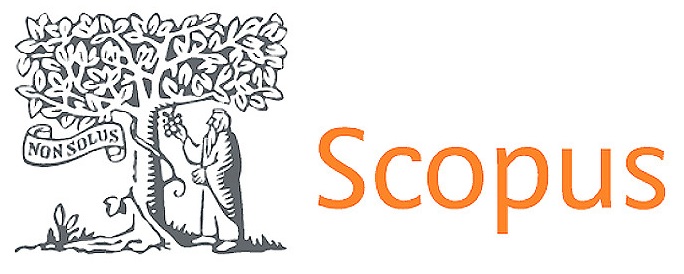Old title: A Clinical Study on the Use of EGF-CMC Hydrogel in Minimizing Biofilm Formation in Diabetic Wounds
DOI:
https://doi.org/10.56294/hl2025622Keywords:
Epidermal growth factor (EGF), Carboxy methyl cellulose (CMC), Diabetic, Bio-film formation, WoundsAbstract
Introduction: Diabetes-related wounds are worsened by slowed healing and heightened bio-film formation vulnerability, which can result in chronic infections. Epidermal growth factor (EGF) is well known for having regenerating qualities, therefore adding the carboxy-methyl cellulose (CMC) were the hydro gel in preventing the growth of bio films in wounds caused by diabetes.
Methods: A 13-week placebo-controlled clinical research with 30 type 2 diabetes patients (17 using CMC hydrogel, 13 using EGF-CMC hydrogel) assessed wound healing in venous ulcers. Swab samples were taken at weeks 2, 7, and 13. Microbiologists and imaging techniques analyzed biofilm formation, microbial load, strain identification, and pathogenic gene expression.
Result: Comparing the EGF-CMC a hydrogel to the untreated category, a significant reduction in bio film formation was observed. Reduced numbers of microbes were found by microbiology examination and imaging procedures verified the reduction of the bio film formations. This emerged that the likelihood of separating organisms that produce bio films of injuries given CMC hydrogel formulation were eighty-three percent higher than that from injuries handled with EGF-CMC.
Conclusion: The research indicates that isolates with decreased formation of bio film were seen in lesions that received EGF-CMC hydrogel, which is despite the fact of no discernible differences in bacterium counts or genes related to virulence could be identified. This result emphasizes how the reactive covering can affect the bacteria activity in diabetes patients' persistent injuries.
References
1. Abazari MF, Gholizadeh S, Karizi SZ, Birgani NH, Abazari D, Paknia S, Derakhshankhah H, Allahyari Z, Amini SM, Hamidi M, Delattre C. Recent advances in cellulose-based structures as the wound-healing biomaterials: a clinically oriented review. Applied Sciences. 2021 Aug 24;11(17):7769.https://doi.org/10.3390/app11177769
2. Wang J, Geng X, Liu K, Zhao L, Li H. Multifunctional hydrogel containing platelet camouflaged ultra-small silver nanoparticles accelerates diabetic wound healing in Type 1 Diabetic rats.https://doi.org/10.21203/rs.3.rs-2490411/v1
3. Soltani E, Farahpour MR, Tabatabaei ZG. Lavender officinalis essential oil conjugated carboxymethyl cellulose: As boosters of antibacterial and bio enhancers to accelerate the repair of full-thickness infected wound. Polymer Bulletin. 2024 May;81(7):6091-113.https://doi.org/10.1007/s00289-023-04984-2
4. Okur ME, Bülbül EÖ, Mutlu G, Eleftherıadou K, Karantas ID, Okur NÜ, Siafaka PI. An updated review for the diabetic wound healing systems. Current Drug Targets. 2022 Mar 1;23(4):393-419.https://doi.org/10.2174/1389450122666210914104428
5. Almasian A, Najafi F, Eftekhari M, Ardekani MR, Sharifzadeh M, Khanavi M. Polyurethane/carboxymethylcellulose nanofibers containing Malva sylvestris extract for healing diabetic wounds: Preparation, characterization, in vitro and in vivo studies. Materials Science and Engineering: C. 2020 Sep 1; 114:111039.https://doi.org/10.1016/j.msec.2020.111039
6. Shah SA, Sohail M, Khan S, Minhas MU, De Matas M, Sikstone V, et al. Biopolymer-based biomaterials for accelerated diabetic wound healing: A critical review. International journal of biological macromolecules. 2019 Oct 15; 139:975-93. https://doi.org/10.1016/j.ijbiomac.2019.08.007
7. Kanikireddy V, Varaprasad K, Jayaramudu T, Karthikeyan C, Sadiku R. Carboxymethyl cellulose-based materials for infection control and wound healing: A review. International Journal of Biological Macromolecules. 2020 Dec 1;164:963-75.https://doi.org/10.1016/j.ijbiomac.2020.07.160
8. Garg SS, Dubey R, Sharma S, Vyas A, Gupta J. Biological macromolecules-based nanoformulation in improving wound healing and bacterial biofilm-associated infection: A review. International Journal of Biological Macromolecules. 2023 Aug 30;247:125636.https://doi.org/10.1016/j.ijbiomac.2023.125636
9. Zheng SY, Wan XX, Kambey PA, Luo Y, Hu XM, Liu YF, Shan JQ, Chen YW, Xiong K. Therapeutic role of growth factors in treating diabetic wound. World journal of diabetes. 2023 Apr 15;14(4):364.https://doi.org/10.4239%2Fwjd.v14.i4.364
10. Razdan K, Garcia-Lara J, Sinha VR, Singh KK. Pharmaceutical strategies for the treatment of bacterial biofilms in chronic wounds. Drug Discovery Today. 2022 Aug 1;27(8):2137-50.https://doi.org/10.1016/j.drudis.2022.04.020
11. Berry-Kilgour C, Cabral J, Wise L. Advancements in the delivery of growth factors and cytokines for the treatment of cutaneous wound indications. Advances in wound care. 2021 Nov 1;10(11):596-622.https://doi.org/10.1089/wound.2020.1183
12. Pei J, Palanisamy CP, Alugoju P, Anthikapalli NV, Natarajan PM, Umapathy VR, Swamikannu B, Jayaraman S, Rajagopal P, Poompradub S. A comprehensive review on bio-based materials for chronic diabetic wounds. Molecules. 2023 Jan 6;28(2):604.https://doi.org/10.3390/molecules28020604
13. Alavi M, Rai M. Antibacterial and wound healing activities of micro/nanocarriers based on carboxymethyl and quaternized chitosan derivatives. InBiopolymer-based nano films 2021 Jan 1 (pp. 191-201). Elsevier.https://doi.org/10.1016/B978-0-12-823381-8.00009-0
14. Alavi M, Nokhodchi A. Antimicrobial and Wound Treatment Aspects of Micro‐and Nanoformulations of Carboxymethyl, Dialdehyde, and TEMPO‐Oxidized Derivatives of Cellulose: Recent Advances. Macromolecular Bioscience. 2020 Apr;20(4):1900362.https://doi.org/10.1002/mabi.201900362
15. Sun H, Pulakat L, Anderson DW. Challenges and new therapeutic approaches in the management of chronic wounds. Current drug targets. 2020 Sep 1;21(12):1264-75.https://doi.org/10.2174/1389450121666200623131200
16. Berry-Kilgour CR. Biomaterial-Based Delivery of a Growth Factor and Cytokine Combination to Address Wound Healing Complications (Doctoral dissertation, University of Otago).http://hdl.handle.net/10523/12296
17. Tehrany PM, Rahmanian P, Rezaee A, Ranjbarpazuki G, Fard FS, Zandieh MA, Ranjbarpazuki A, Asghari S, Javani N, Nabavi N, Aref AR. Multifunctional and theranostic hydrogels for wound healing acceleration: An emphasis on diabetic-related chronic wounds. Environmental research. 2023 Dec 1; 238:117087.https://doi.org/10.1016/j.envres.2023.117087.
Downloads
Published
Issue
Section
License
Copyright (c) 2025 Piyush Dadarao Wagh, Ravindra HN, Swayamsidha Mangaraj, Shikhar Ganjoo, Prakriti Kapoor, Manish Nagpal (Author)

This work is licensed under a Creative Commons Attribution 4.0 International License.
The article is distributed under the Creative Commons Attribution 4.0 License. Unless otherwise stated, associated published material is distributed under the same licence.






